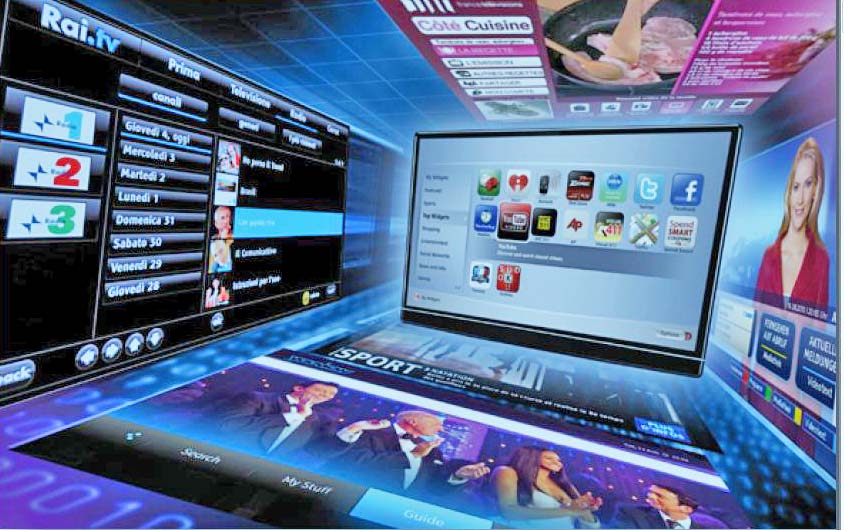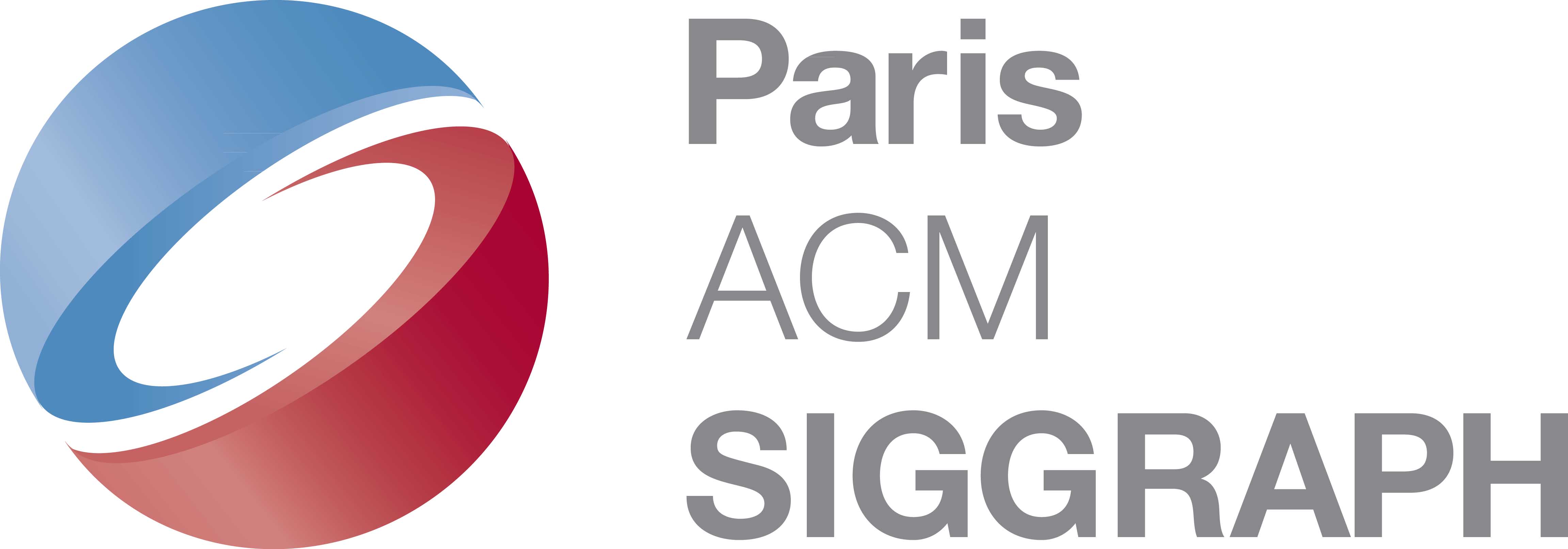Television

Connected TV, an image from the UER website.
Last revised 9/1/2014. Return to Major concepts. See cinema, video, transmedia.
We concentrate here on conceptual considerations and the state of the art. The historical development of the field is described, period after period, in our history of digital art.
Television has followed the digitization process of cinema: fragmentation down to pixels, use of automata for recording, processing, managing the workflow and distribution. The workflow is more and more dematerialized to reduce delays and costs.
Some references
- The monthly journal Télé numérique (or Télé Satellite) published its #258 issue in June 2011. Most impressive, the list of frequencies accessible from Europe: 39 pages of tables in small fonts. To be noted also a 5 pages article about Canal+.
- In transmedia, see [Rose 2011]. A lot also in Digital Storytelling. A creator's guide to interacdtive entertainment. [Miller, 2014].
- Hybrid TV: convergence of Internet ant television. (Sonovision Sept. 2011).
- TV Led see LED Art .
- Connected TV and relationships with Internet. A note by UER, with the schema reproduced here.
- Television as a creative medium. 5th part, 80 pages, by [Youngblood], who uses here the term "videosphere".
< Télévision, l'ère du numérique. La documentation française, 2012.
< Bowling alone. by Robert Putnam. Simon &Schuster 2000. A heavy sociological study on the effects of TV on American society. Conclusion: very negative, in spite of the scientific doubt that any study of this type must never forget.
< L'action sur l'homme: Cinéma et Télévision. by Gilbert Cohen and Pierre Fougeyrollas. Denoël 1961. A sociological essay.
- Video of a short 1947 film, showing miniature TV sets, strongly resembling the cell phones of today. (Seen on the blog of Eric Le Guay.
< Cinéma total , by Barjavel (1944, but on line ).
- Two films of forecasting, (1947) offered online by INA.
- A personal note by Eric Leguay.
" Si la Télévision perd de son audience, c'est sans doute en raison de la concurrence du net. Mais, comme le fait remarquer Eric Le Guay sur son blog du 27/12/2010. que la qualité des programmes n'est plus la même Il écrit "...ma jeunesse fut bercée par les émissions de Maritie et Gilbert Carpentier. Dans des décors Kitsch à souhait, évoluaient en permanence Sacha Distel, Carlos et Claude François...". Personnellement, j'appréciais surtout le Grand Echiquier de Jacques Chancel, avec des musisiens aussi sympa qu'agréables à écouter comme Lily Laskin (harpe) et Artur Rubinsten (piano). En tous cas, lui comme moi, nous ne restons plus longtemps devant le petit écran."
DICCAN'S PARTNERS:

Paris ACM Siggraph, the French chapter of ACM Siggraph, worldwide non-profit organization of computer graphics.
